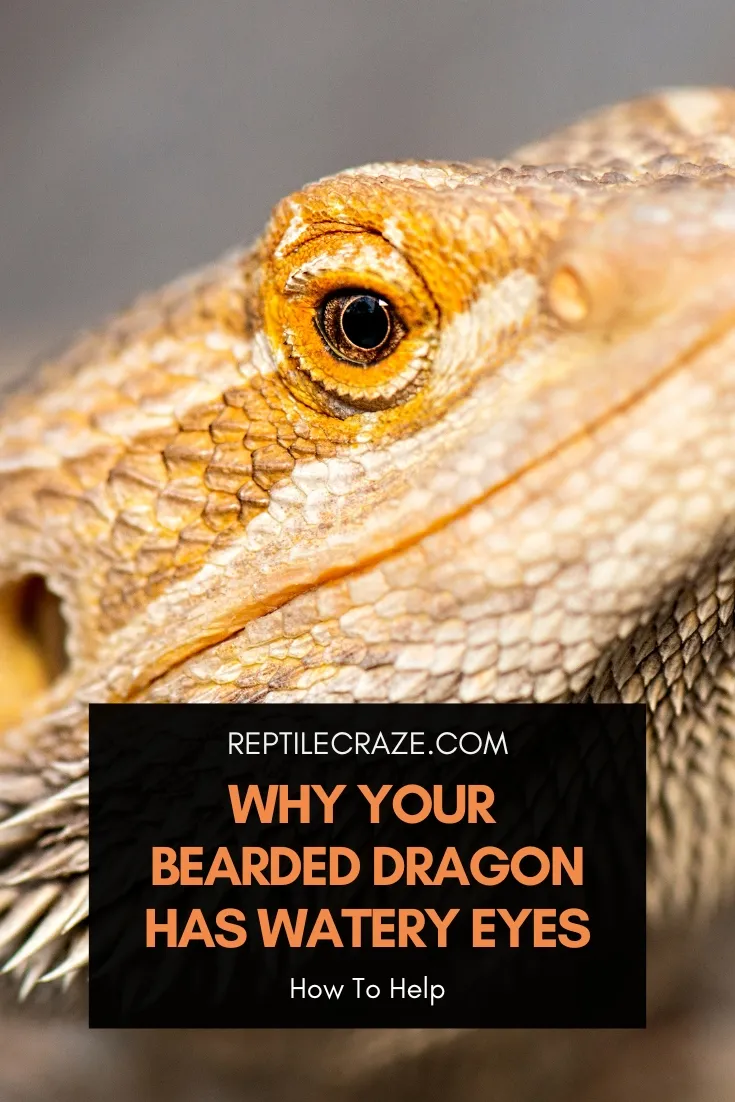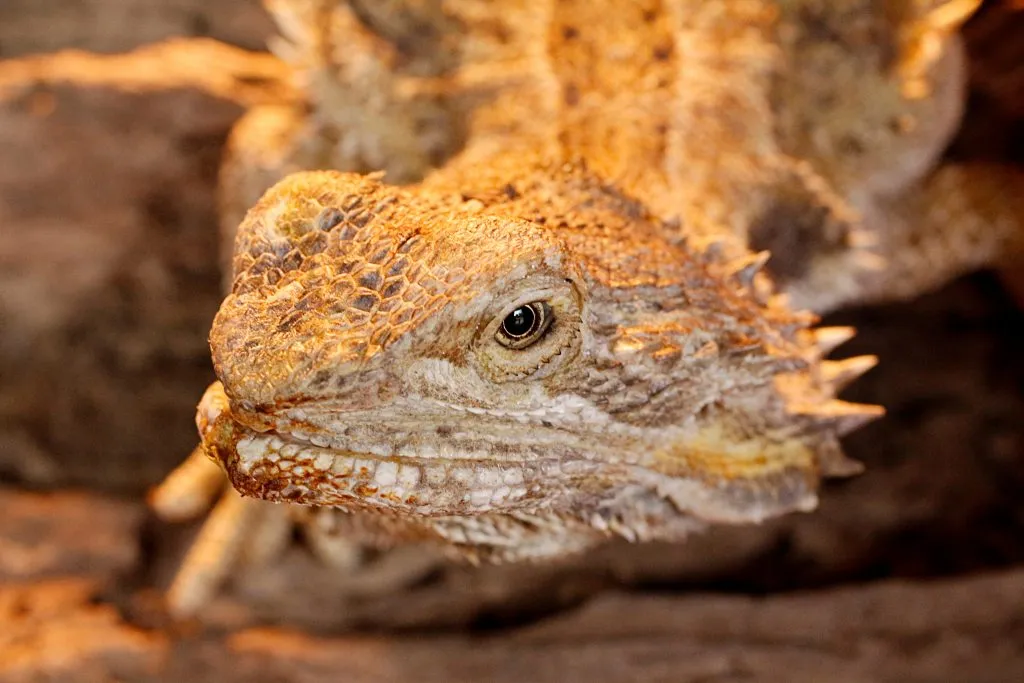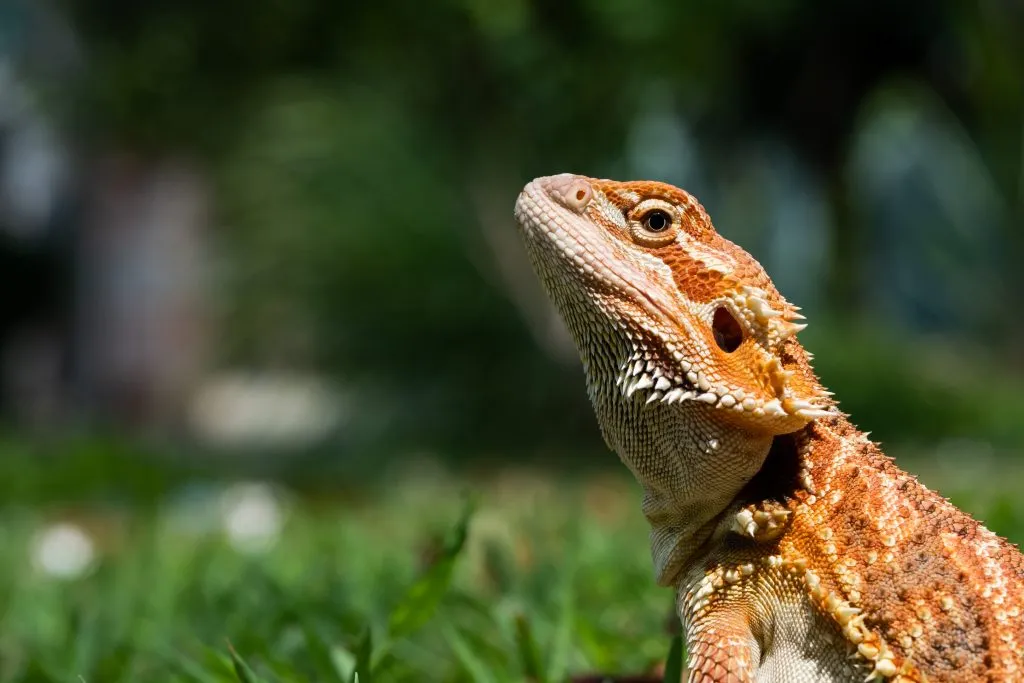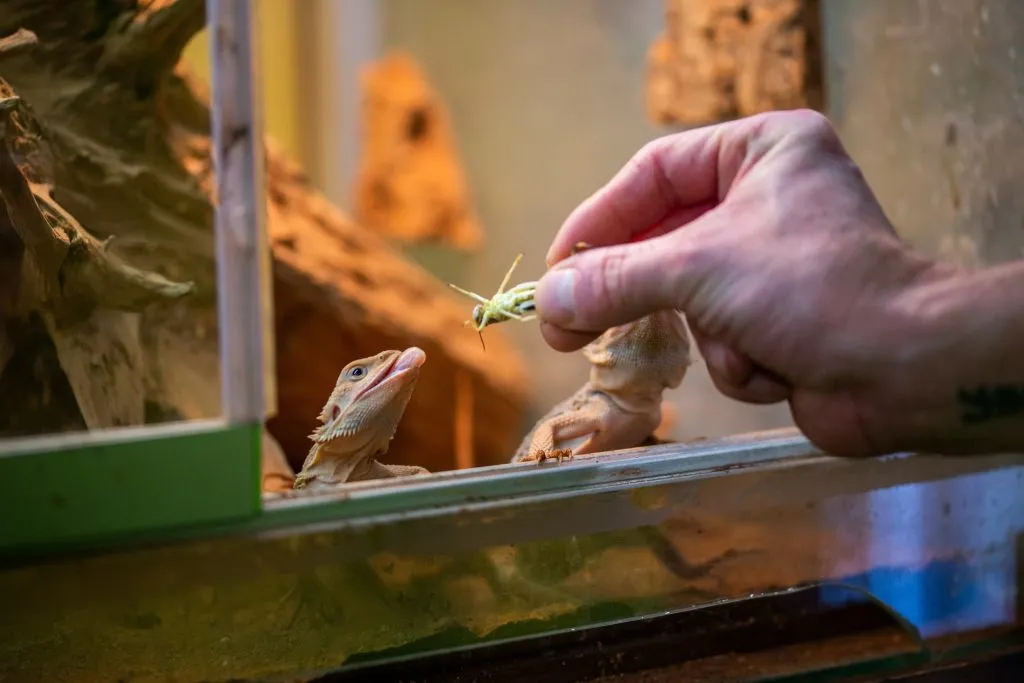
One of the most common health problems that bearded dragons are prone to have is watery eyes. This can be caused by certain underlying conditions that may affect their vision and overall quality of life if not addressed properly.
The most common causes of watery eyes in bearded dragons are eye infections, parasites, irritation and trauma. In more severe cases, watery eyes suggest an underlying systemic disease, a nutritional deficiency, or an injury causing damage to the cornea.
Spotting other symptoms that your bearded dragon has will be very useful in assessing its current health and whether the watery eyes warrant an immediate visit to the vet. This article will explore each probable cause and provide instructions on what you can do to help your pet feel better.
Table of Contents
Most Common Culprits Behind Watery Eyes in Bearded Dragons

Eye Infections
Bacterial, fungal, or viral infections can affect the eyes and cause them to become watery and swollen.
You may also observe a cloudy appearance or discharge that can form crusts around the eyelids. Often, the bearded dragon has trouble opening its eyes.
Parasites
Some mites burrow in the skin around the bearded dragon’s eyes. These can cause watery eyes and irritation, making them vulnerable to eye infections.
Try to inspect closely and see if you find any suspicious tiny black or red dots around the eyes.
Irritation and Trauma
Not surprisingly, eye injury from bedding material is very common in captive reptile pets. Foreign objects in the enclosure, such as loose particles from substrates, can enter the eyes and cause irritation, redness, and watering.
More Alarming Causes of Watery Eyes in Bearded Dragons

An Underlying Systemic Disease
Often, watery eyes turn out to be just part of the equation. Observe your bearded dragon closely to see if it is also lethargic, refuses to eat, has a runny nose, or breathes with its mouth open.
Watery eyes can be a manifestation of a more serious illness such as pneumonia or respiratory infection.
Nutritional Deficiencies (Hypovitaminosis A)
Vitamin A deficiency disrupts normal skin cell turnover. Aside from watery eyes, more severe clinical symptoms, such as corneal inflammation, sore mouth, and kidney failure may occur.
Often, pet reptiles that do not receive a balanced diet rich in vitamin A are prone to developing this disease.
Corneal Injury
In worse cases of traumatic injury, foreign materials that enter the eye can have sharp edges that tear the cornea and cause abrasion.
Your vet will perform a dye test to confirm the presence of corneal ulceration. Treatment with ophthalmic ointment should be started as soon as possible to avoid complications.
How Can You Help Your Bearded Dragon’s Watery Eyes?

There are a few things you can do to provide relief and support for your pet:
First-Aid Saline Flush
A saline flush is helpful when a foreign object has entered the eyes causing irritation, or when they become dirty due to parasites or an eye infection. Gently flush the eyes with a sterile saline solution using a syringe without the needle attached.
Alternatively, having a safe eye rinse for reptiles (like this one) on-hand in your reptile care kit is useful for these types of unexpected incidents.
Afterward, it’s best to visit the vet to let them check the extent of your bearded dragon’s eye problem and see if it needs to be prescribed medications.
A Soaked Cotton Tip to Remove Mites and Debris
You can remove mites, dirt, and encrusted discharge around the eyes by gently wiping the area with a cotton tip soaked in saline.
Of course, your vet will also have some medications to get rid of all external parasites that may be hiding in your bearded dragon’s skin.
Did you know? The majority of ocular diseases in reptiles is secondary to poor husbandry (Holmberg, 2008).
Most cases of watery eyes and ocular problems are avoidable with the correction of poor husbandry.
This includes an unhealthy diet, unsuitable thermal gradient and humidity, overcrowding in enclosures, too much handling, poor sanitation, and the presence of environmental stressors.
Keeping the Enclosure Clean
Maintaining a clean and well-ventilated environment for your bearded dragon is crucial. This includes regularly cleaning their enclosure, providing fresh water, and increasing humidity levels as needed.
Consider changing your substrate to one that is less dusty and not loosely particulate.
A Balanced Diet

Another important aspect of care is providing a balanced diet. Bearded dragons are omnivores and require a mix of plant and animal-based
Offer them a variety of vitamin A-rich leafy greens and gut-loaded feeder insects to keep them healthy.
Vitamin and mineral supplementation specific for reptiles is also very helpful to ensure that your pets meet the recommended nutritional dose that they need. For vitamin A in reptiles, this is 5,000 to 10,000 IU/kg.
Still, if you already feed your bearded dragon a proper diet, you should talk to your vet before offering your beardie vitamin supplementation.
Proper UVB Lighting
Providing UVB lighting is necessary for your bearded dragon’s vision, but short-wavelength photoreactive UVB radiation can be harmful to the cornea.
Ensure that their enclosure has a proper UVB light source at 290 to 300 nm, and remember to replace it every 6-12 months.
In other words, get one of these UVB bulbs here to make sure your beardie gets the right amount of UVB.
If you notice any discomfort or pain in your bearded dragon, a timely visit to the vet for examination and treatment is the best course of action.
Being proactive and addressing concerns early on can make a big difference in the outcome for your pet.
- Enchi Ball Python: A Unique and Stunning Morph of Python regius - March 27, 2025
- Emerald Tree Monitor: The Enigmatic Green Guardian of the Rainforest - March 26, 2025
- The Egyptian Cobra (Naja haje): A Fascinating Serpent - March 25, 2025
